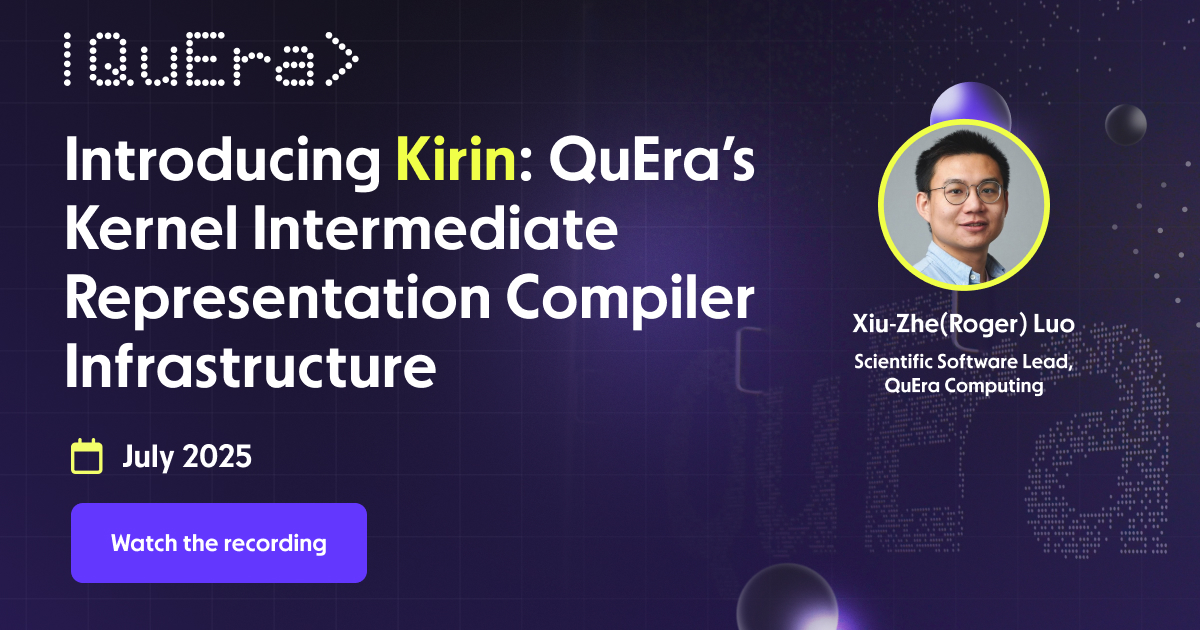Discover Kirin, QuEra’s open-source compiler infrastructure designed to streamline quantum programming for neutral atom-based systems. In this webinar, Roger Luo from QuEra introduces the motivations behind Kirin, its architecture, and how it empowers physicists and researchers to write more efficient and scalable quantum software. Learn how Kirin bridges the gap between high-level programming and low-level hardware control using a powerful intermediate representation tailored for dynamic quantum systems.
Chapters:
00:32 – Who is QuEra and what we do
01:35 – Why neutral atoms for quantum computing
02:58 – Key advantages of QuEra’s neutral atom technology
04:48 – Real-world deployment: Gemini machine at AIST
05:44 – Visual demo: atom shuttling
06:30 – Complexity of programming neutral atom devices
07:05 – Introduction to Kirin
08:00 – Kirin’s motivation and history
09:14 – Challenges with fragmented compilers
11:20 – Why scientists need compiler tools
12:37 – What a compiler helps solve in quantum systems
16:00 – Structural programming advantages
19:09 – When you need a compiler (and when you don’t)
20:32 – Requirements for quantum error correction (QEC)
22:33 – Native vs external control flow representations
26:20 – Compiler benefits: performance and reliability
29:01 – Desired features in scientific compiler frameworks
30:42 – Why Kirin is designed for scientists, not engineers
36:18 – Lightweight vs full-stack compilers (Kirin vs MLIR)
37:29 – Example: defining a compiler in Python
43:11 – Live demo: building a quantum DSL using Kirin
48:58 – Summary of Kirin’s capabilities
49:39 – How Kirin powers QuEra’s Bloqade SDK
50:21 – What's next for open-source tools from QuEra
54:12 – Q&A on QEC support and licensing




















.png)


.jpg)


D%20Rydberg%20Simulator.jpg)
.jpg)
.jpg)
